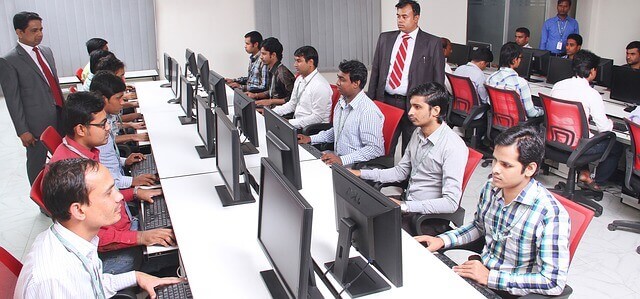The Government of India launched the Digital India Campaign with the motive of digital infrastructure as a core utility to all citizens and digital empowerment in all areas. The programme focuses on governance and services available on demand electronically to all citizens and connecting rural India with fast internet. The Digital India Programme was launched on July 1, 2015, by Prime Minister of India Narendra Modi. It recently completed 7 successful years. Therefore, digital India week is a celebration of connecting the unconnected parts of India.
Here are some details that you should know about the initiative.
The Vision & Objective
The vision of the digital India scheme is to promote growth in all sectors. The key objectives of programme are:
– Digital Enhancement
It plans to connect rural areas with high-speed internet, make all online services available in all sectors on demand, and create universal digital literacy & transformation.
High-speed internet for delivery of services, a unique, permanent, online identity that can be verified from birth to death for every citizen, and availability of mobile phones & bank accounts for digital finances in a safe cyber-space are the core part of digital infrastructure improvement.
– Delivering Digital Services
Real-time service accessibility from the internet, cloud accessibility for all citizen entitlements, and easily incorporated services spanning departments or jurisdictions are the major highlights of the governance and service-on-demand objective of the digital India plan.
– Overall Digital Empowerment
Accessibility to digital resources and online platforms to submit government documents and certificates are the greatest benefits offered by the digital India programme.
While urban India has moved further in digital advancement, the rural areas still have scope for major improvement. With this plan, the rural areas can enjoy accessibility to major sectors, employment opportunities, digital literacy, and quick availability of essential services at their convenience.
Other Government of India programmes like BharatNet, Make in India, Startup India, Standup India, Industrial Corridors, Bharatmala, and Sagarmala are made possible by and benefit from this programme.
Infrastructure & Empowerment
The government offers several programmes as part of this project that helps to facilitate a dependable digital infrastructure. Here are a few of the programmes included in it:
- AADHAR – Emporwing digital identification.
- Deen Dayal Upadhyaya Gram Jyoti Yojana – Ensuring continuous power supply for rural India.
- Cyber Swachhta Kendra – Generating secure cyberspace.
- DigiLocker – Empowering digital wallet.
- Bharat Broadband Network (BBNL) – Ensuring the safety of digital India.
- Digital Saksharta Abhiyaan (DISHA) – IT training initiative.
- Digitize India Platform – Platform for digitization of scanned document images.
- Centre for Excellence for Internet of Things (CoE-IT) – Creating domain capability & applications.
- CERT-IN – Providing Indian cyber-space security.
- Common Services Centres (CSCS) – Improving attainability of social welfare programmes, financial services, agricultural services, and vital healthcare and public utility services.
How Is The Digital India Initiative Opportune
Aadhar was one of the first digital India initiatives. Today, with 1.3 billion people on Aadhaar and 700 million+ Aadhaar-linked bank accounts, essentially Digital India scheme was useful in the Covid-19 pandemic. It effectively contributed to financial services reaching every corner of the country.

Here are some more benefits that you may want to pay more attention to:
- Electronic manufacturing in native India helped villages connect to better opportunities and services.
- A bank account for payments and subsidies with immediate benefit transfers.
- There are many brands like PayNearby & Spice Money empowering India.
- Digital literacy with high-speed internet helped the rural Indian population find career options and job prospects.
- Worldwide access to all services on mobile phones.
- A universal digital identification to verify the end user.
- The initiative also seeks to make India, the world’s leading electronics producer by banning all imports from other nations.
Conclusion
In conclusion, on the digital mission, India has accomplished substantial digital literacy. However, if a citizen from the rural class or small business sector attempts to comprehend the vision and take of the programme, they will struggle to comprehend it.
The language on the digital India website is fairly difficult for most Indians; therefore, it lacks the basic foundation to work on the digital divide in India. Regardless, it will be unjust not to consider the revolutionary impact the programme has drawn on the country.
Also, you may want to read about Best Advice For a Confused Student After 10th
Follow us on Instagram for more updates.

